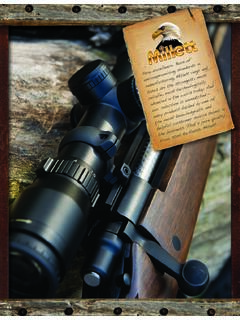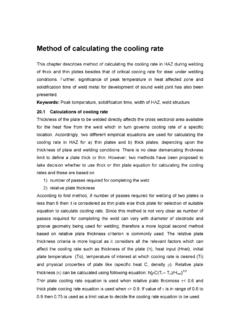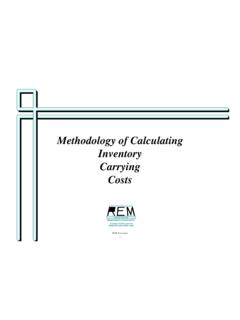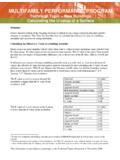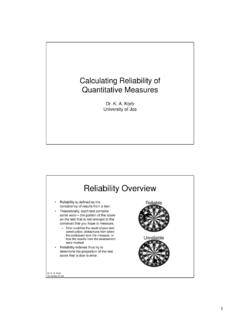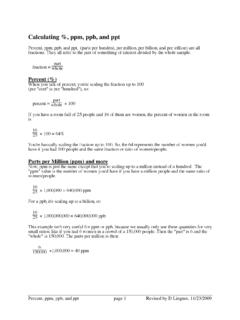Transcription of Worksheet for Calculating 0.1 Mil Target Knob …
1 Worksheet for Calculating Mil Target Knob Settings 25-Yard Increments, 100 to 2000 Yards By Major John L. Plaster, USA (ret). In a previous article I explained how to convert inches of bullet drop or wind drift into tenths-of-a-mil, for use with the Mil increment Target knobs now found on some riflescopes, including several models from Bushnell and Millett. This article simplifies the conversion process, with a Worksheet you can print and use to convert inches to mils. All you need is your bullet's inches of drop or wind drift, and a handheld calculator to precisely divide those inches by an indicated conversion factor (see below). This yields the knob settings in tenths-of-a-mil, at 25-yard increments. If your bullet drop and wind drift inches are only available in hundred-yard increments,(100, 200, 300 yards, etc) convert those hundred-yard distances into mil settings.
2 After that, estimate what the 1/10th mil settings would be at the finer intervening distances of 25, 50 and 75 yards, and you'll still have a solid beginning for knob settings. Let's look at the columns below: On the left is the distance in yards, at 25-yard increments, from 100 to 2000 yards. Next is a space for you to write your bullet's inches of drop or inches of wind drift in a 10 MPH, full crosswind. (If you're converting both drop and wind drift, use separate worksheets). Next is the Conversion Factor by which you divide the inches, to determine the equivalent amount in mils, at that distance. Enter the resulting mil conversion under MILs and do not round off. The final column is where you round off the Mils to the closest tenth which is your Target knob setting, at increments. After this, I write the settings on a 3x5 card, cover it with clear tape, and carry it to the range or field.
3 Importantly, realize that this is theoretical or book data is mathematically correct, but your rifle, with your scope, your ammo and your shooting conditions will vary a bit from it. That's why it's worth verifying this book data by actually firing with the indicated knob settings, and fine-tuning the knob settings. In their thirst for ever more information, some precision riflemen want to know how these conversion factors were calculated. Here's the key --- at each 25-yard increment, the Mil Conversion Factor increases by mils. MIL Worksheet . Distance Inches of Drop MILs Round Mils to in YARDS or 10 MPH wind Conversion Factor Closest Tenth 100 (Divide by) . 125 (Divide by) . 150 (Divide by) . 175 (Divide by) . 200 (Divide by) . 225 (Divide by) . 250 (Divide by) . 275 (Divide by) . 300 (Divide by) . 325 (Divide by) . 350 (Divide by) . 375 (Divide by) . 400 (Divide by).
4 425 (Divide by) . 450 (Divide by) . 475 (Divide by) . 500 (Divide by) . 525 (Divide by) . 550 (Divide by) . 575 (Divide by) . 600 (Divide by) . 625 (Divide by) . 650 (Divide by) . 675 (Divide by) . 700 (Divide by) . 725 (Divide by) . 750 (Divide by) . 775 (Divide by) . 800 (Divide by) . 825 (Divide by) . 850 (Divide by) . 875 (Divide by) . 900 (Divide by) . 925 (Divide by) . 950 (Divide by) . 975 (Divide by) . 1000 (Divide by) . 1025 (Divide by) . 1050 (Divide by) . 1075 (Divide by) . 1100 (Divide by) . 1125 (Divide by) . 1150 (Divide by) . 1175 (Divide by) . 1200 (Divide by) . 1225 (Divide by) . 1250 (Divide by) . 1275 (Divide by) . 1300 (Divide by) . 1325 (Divide by) . 1350 (Divide by) . 1375 (Divide by) . 1400 (Divide by) . 1425 (Divide by) . 1450 (Divide by) . 1475 (Divide by) . 1500 (Divide by) . 1525 (Divide by) . 1550 (Divide by) . 1575 (Divide by).
5 1600 (Divide by) . 1625 (Divide by) . 1625 (Divide by) . 1650 (Divide by) 1675 (Divide by) 1700 (Divide by) 1725 (Divide by) 1750 (Divide by) 1775 (Divide by) 1800 (Divide by) 1825 (Divide by) 1850 (Divide by) 1875 (Divide by) 1900 (Divide by) 1925 (Divide by) 1950 (Divide By) 1975 (Divide By) 2000 (Divide By)








